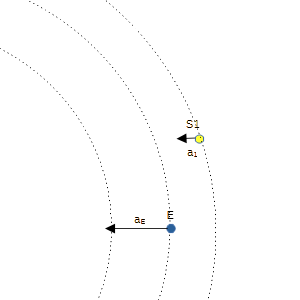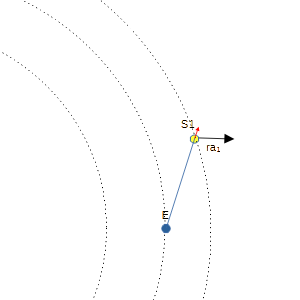

Max70
Senior Members-
Posts
45 -
Joined
-
Last visited
Contact Methods
-
Website URL
https://max70blog.blogspot.com/
Recent Profile Visitors
The recent visitors block is disabled and is not being shown to other users.
Max70's Achievements

Quark (2/13)
-23
Reputation
-
I think that the ideas I've presented on my thread "The simplest cause of the accelerating expansion of the universe" could be tested by means of relativistic N-body simulations. Do you think it's feasible ?
- 1 reply
-
-1
-

The simplest cause of the accelerating expansion of the universe
Max70 replied to Max70's topic in Speculations
The attraction of CBH1 on S2 is minor that the attraction of CBH2 on S2. The attraction of CBH2 on S1 is minor that the attraction of CBH1 on S1. I think that the above affirmation is not applicable if the observed universe (that is the part of the observable universe that we actually observe with our telescopes) is a little part of a turn of the spiral in the video in the Wikipedia page of the galaxy rotation curve. I think that the above affirmation is also not applicable to the cases shown in the following figures (where A1, A2, A3 and A4 are attractors): I quote the Wikipedia page Expansion of the universe: "Negative-pressure fluids, like dark energy, are not experimentally confirmed, but the existence of dark energy is inferred from astronomical observations". Dark energy is inferred from astronomical observations. But we can't observe the part of the observable universe that is outside the range of our current telescopes.- 130 replies
-
-1
-

The simplest cause of the accelerating expansion of the universe
Max70 replied to Max70's topic in Speculations
😕 -

The simplest cause of the accelerating expansion of the universe
Max70 replied to Max70's topic in Speculations
In my last post I didn't dispute the existence of the dark matter. -

The simplest cause of the accelerating expansion of the universe
Max70 replied to Max70's topic in Speculations
I contest this figure and this sentence. I'll try to explain with this video in the Wikipedia page of the galaxy rotation curve. Now imagine that the observed universe (that is the part of the observable universe that we actually observe with our telescopes) is a little part of a turn of the spiral in the video. Which is the acceleration of the objects that we observe ? The objects in the spiral have not only centripetal acceleration, but also tangential acceleration. I don't think that all the objects that we observe have the same acceleration, because of the spiral motion. -

The simplest cause of the accelerating expansion of the universe
Max70 replied to Max70's topic in Speculations
🤣- 130 replies
-
-1
-

The simplest cause of the accelerating expansion of the universe
Max70 replied to Max70's topic in Speculations
But there are attractors like the Great Attractor and the Shapley Attractor. Similar attractors may exist on a larger scale and influence the motion of the objects that we observe. Which is the result of these calculations done for all the objects in the colossal galaxy cluster ? Which is the result of these calculations if there are two or more colossal galaxy clusters and colossal black holes ? Can't these calculations demonstrate that the accelerations of the objects that we observe are due to the gravity ? The following figure shows a simple case (where CBH1 adn CBH2 may be colossal black holes or attractors): -

The simplest cause of the accelerating expansion of the universe
Max70 replied to Max70's topic in Speculations
I mean mathematically complicated. I mean that the calculations are more complicated. I said "simplest cause" because it does not require other hypotheses such as quintessence, massive gravity or multiverse.- 130 replies
-
-1
-

The simplest cause of the accelerating expansion of the universe
Max70 replied to Max70's topic in Speculations
I think that the things are more complicated. As I explained in my first post, the objects that we observe are only a little part of a colossal galaxy cluster around a colossal black hole. The motion of objects that we observe is influenced not only by the colossal black hole but also by the other objects in the colossal galaxy cluster. In addition, as I said in some of my posts, it is possible that there are other colossal galaxy clusters and colossal black holes that influence the motion of objects that we observe.- 130 replies
-
-1
-

The simplest cause of the accelerating expansion of the universe
Max70 replied to Max70's topic in Speculations
It's too tiresome and boring.- 130 replies
-
-7
-

The simplest cause of the accelerating expansion of the universe
Max70 replied to Max70's topic in Speculations
I am neither a physicist nor a mathematician.- 130 replies
-
-1
-

The simplest cause of the accelerating expansion of the universe
Max70 replied to Max70's topic in Speculations
I've corrected the dotted lines. I suppose that the CBH is so massive that the values of the accelerations are different. The new figures for absolute and relative accelerations are: I have the following problem: In my last figure, S1 is accelerating away from the Earth, but it is outside of the cones A and B. How can this be explained ? -

The simplest cause of the accelerating expansion of the universe
Max70 replied to Max70's topic in Speculations
There is something that I don't understand. The following figures show the absolute and relative acceleration of a supernova when the CBH is very far. The accelerations are parallel but, if the CBH mass is huge, the values of the accelerations are different. Are the following figures correct ? -

The simplest cause of the accelerating expansion of the universe
Max70 replied to Max70's topic in Speculations
Do you really want the calculation ? Calculation is the arctangent. -

The simplest cause of the accelerating expansion of the universe
Max70 replied to Max70's topic in Speculations
Who said “It is not unscientific to take a guess, although many people who are not in science believe that it is.” ?







